The Outer Banks, as a place that is centrally located and has access to day trips, may not seem logical. After all, it is located on the edge of a continent, and looking east, the nearest land is probably Bermuda, and that’s about 775 miles away.
There are, though, a few day trips that may be worth considering. Admittedly there is so much to do on the Outer Banks that there may be no reason to leave, but just in case, here’s one of our favorites.
Lake Mattamuskeet National Wildlife Refuge—Directions
All travel times, of course, depend on the Outer Banks starting point, but a good estimation is it will take about an hour and a half to get to the Refuge Visitors Center in New Holland. A bit longer leaving from Duck and north into Corolla. For Hatteras Island, anything south of the Tri-Villages Rodanthe, Waves, and Salvo..it’s going to be a long trip.
It’s almost impossible to get lost on this journey. Head to Manteo, get on US 64 West, and just past Mann’s Harbor, the highway splits with US264 bearing off to the left.
Get on US 264 West and stay on it.
Most of the first 35 miles of 264 parallel Alligator River National Wildlife Refuge and is a fascinating world of pocosin, swamp, and dense forest. The first town of the entire drive from Manns Harbor is Engelhard, a small fishing village.
Follow the US 264 signs. In about 15 or 20 minutes, you will see a right-hand turn onto New Holland Road, which leads to the Visitors Center.
Exploring and the Trails
Lake Mattamuskeet is actually the largest natural lake in North Carolina. A very shallow body of water averaging two to three feet in depth, the lake is about seven miles across and 18 miles long.
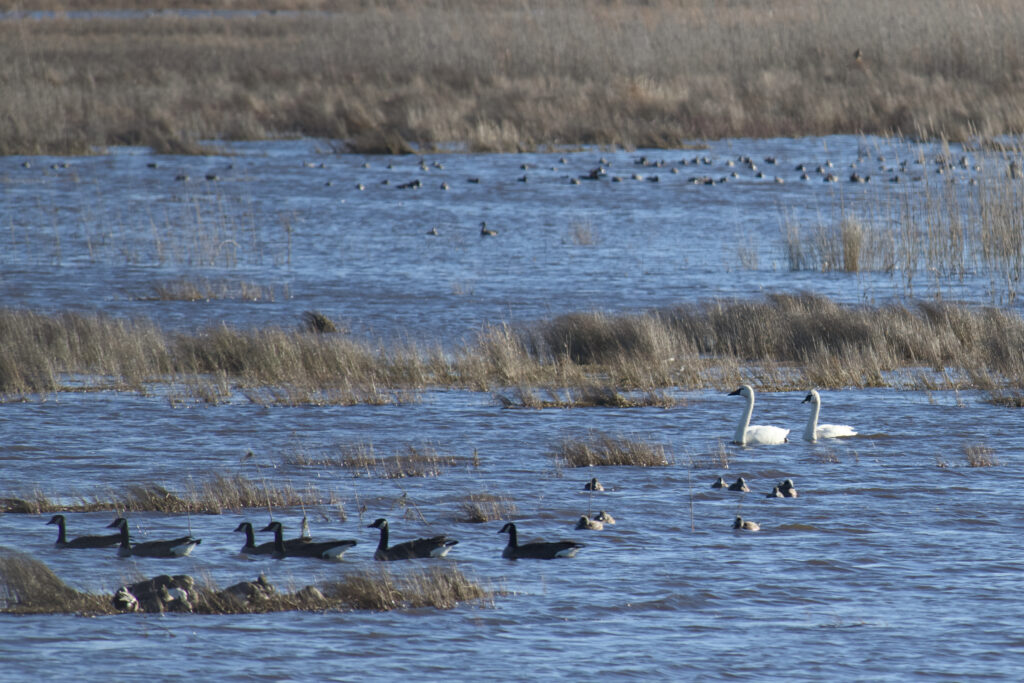
The lake’s origins are a mystery. Native American lore tells the story of a huge peat fire that sank the earth at what is now the lake. Geologists and scientists are not so sure that was what created it, pointing out that a meteor shower that gouged the earth could also create the conditions for the lake.
Whatever its origins, Lake Mattamuskeet rests in the middle of a wide, flat coastal plain. As a consequence, all of the trails are perfect for everyone in the family. Most of the trails are also less than a mile in length.
New Holland Trail
Although each of the trails has something special about it, we’re giving this one a little more description because of how different the environment is that it traverses.
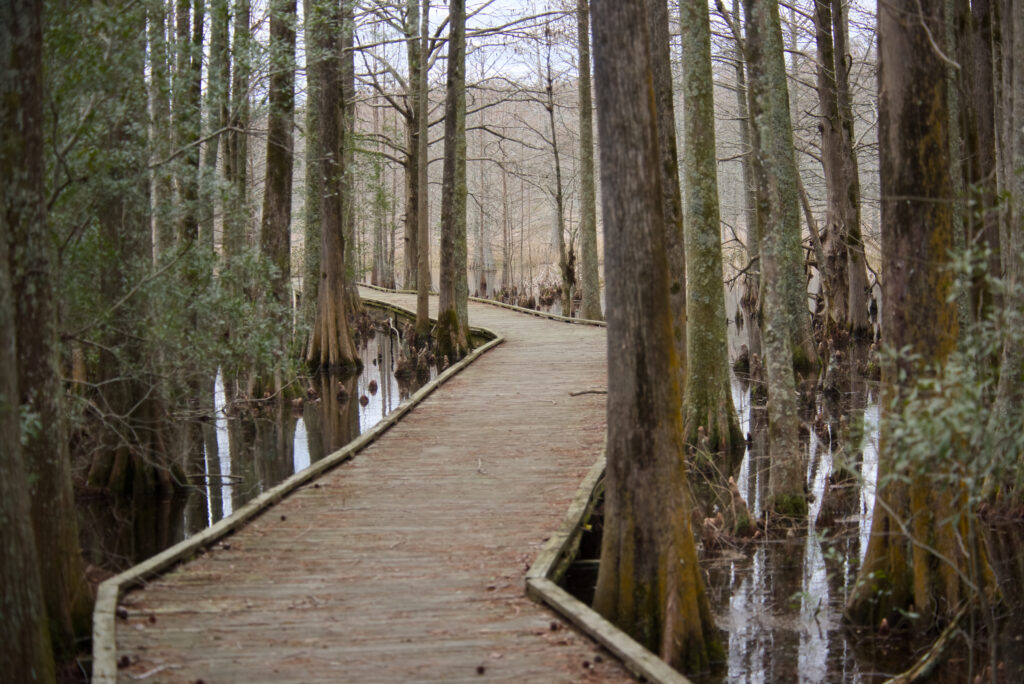
Much of this trail is a boardwalk that traverses a spectacular cypress swamp. The boardwalk takes hikers into the heart of the swamp—it is an awe-inspiring and beautiful experience.
Keep a camera ready for some great pictures of birdlife flitting through the trees. The Refuge trail description suggests there may be river otters in the waters as well, but as a general rule, if an otter sees you, you will not see it.
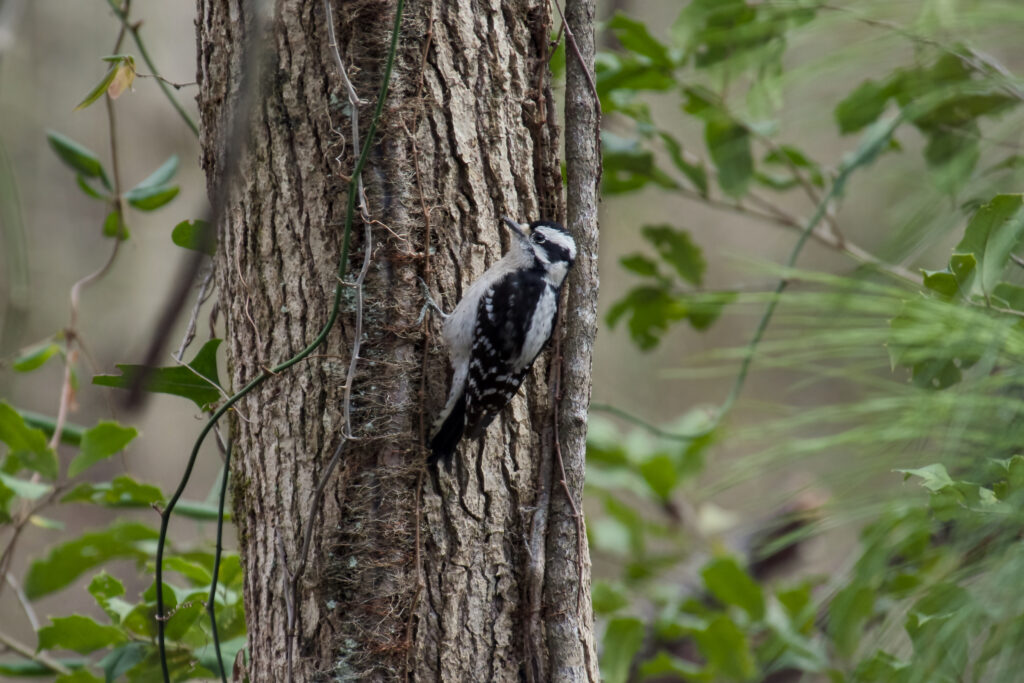
The trail begins just across Wildlife Drive from the Visitors Center and is listed as .3 miles in length. A highly recommended first-time wilderness walk for young children.
Driving through the Refuge
It would be hard to imagine a better wildlife area for just driving and observing.
About a mile and a half past Englehard, North Lake Road intersects US264 on the right-hand side. The road leads to Fairfield on the north side of the lake. Turn left to Frying Pan Landing Road, which is a five mile long causeway traversing the lake.
There is an observation deck along the drive, but the better destination is the marked entrance to Lake Mattamuskeet National Wildlife Refuge, 4.5 miles south at Mattamuskeet Road.
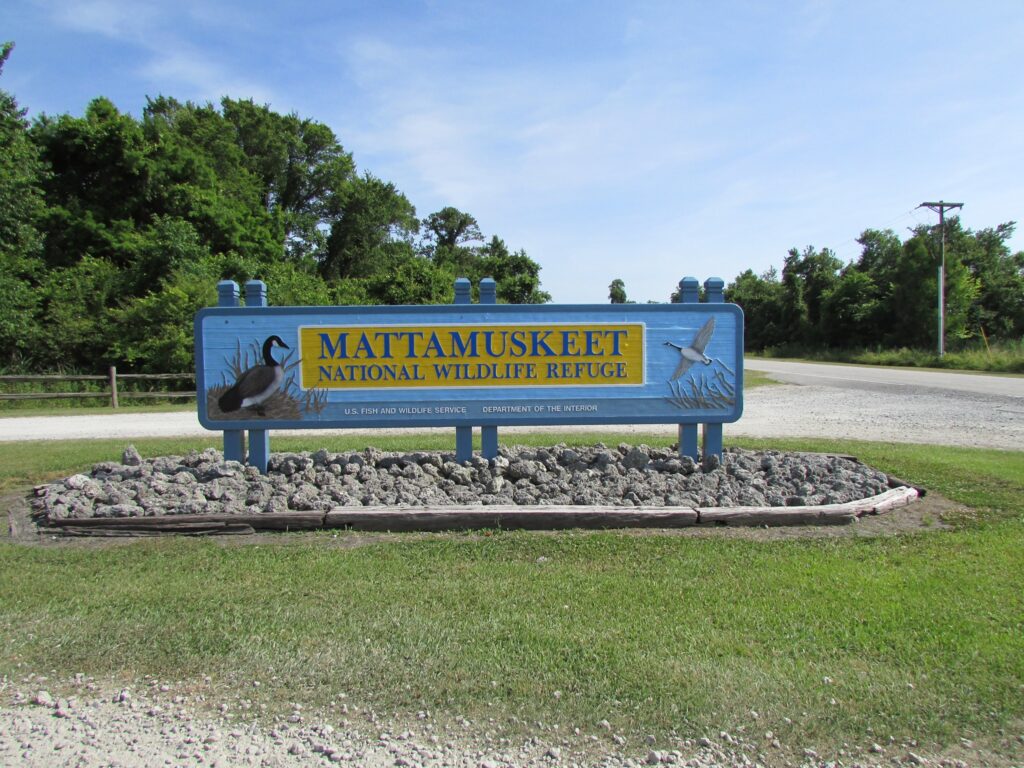
Mattamuskeet Road is a hard packed dirt road suitable for any car.
For wildlife viewing, this is the road to take. Although there is a Wildlife Drive, Mattamuskeet Road offers more spectacular scenery and better chances to get some great pictures of migratory waterfowl in season. Or for birders, it does seem closer to the action than Wildlife Drive.
A little History and What is that Building
Just to the east of the Refuge Visitors Center is a very large white building with a red tile roof and a tower that looks like a lighthouse attached to it. That is the Lake Mattamuskeet Lodge, and its history tells a lot about the history of the lake.
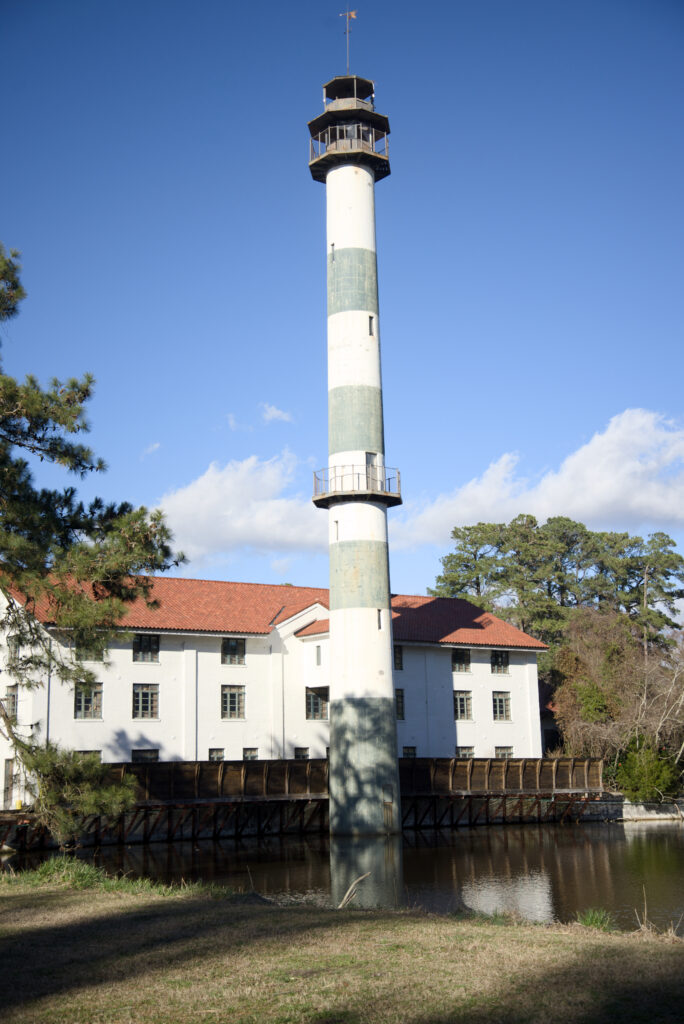
The lodge is currently undergoing a massive renovation that will likely take another three years at least. When completed it will house Hyde County’s Cooperative Extension services as well as once again becoming a center for special events and gatherings.
It was not always a lodge or hospitality center.
Built in 1915, it was originally a pump house—the largest in the world at the time, if numerous accounts of the time are to be believed. The pumps were steam-powered, and the tower that looks like a lighthouse was a smokestack for the coal used to generate steam at that time.
The plan was to pump Lake Mattamuskeet dry and turn it into farmland.
Periodically, the lake was pumped dry, and crops were planted, and the results were spectacular. The problem, though, seems obvious in retrospect but probably was not so apparent at the time.
The lake bed is below sea level, and the only way to keep it from flooding is to run the pumps nonstop. Over time, the maintenance cost exceeded any possibility of profit from farming.
In 1934, the lake was sold to the Federal Government, and the pump house was converted by Civilian Conservation Corps (CCC) workers into the Mattamuskeet Lodge. The lodge opened in 1937.
The CCC was a Great Depression government sponsored program that put unemployed young workers to work.
With hundreds of thousands of migratory waterfowl flocking to the lake, the lodge was a thriving center for hunters until the 1960s, when, inexplicably, migratory waterfowl migration patterns changed, and the hunting became sporadic. In 1974 the Lodge closed.
USFW kept their offices in the building until the 1990s. When they moved, they gave the lodge to Hyde County.
A first attempt at renovations in 2000 found severe structural problems—the sand used for the bricks had been made from sand taken from nearby Pamlico Sound, and salt was in the mix. The bricks were disintegrating.
That has been fixed, as has the roof, but there inside is just a shell right now, and considerable other work must be done before it can reopen to the general public.
